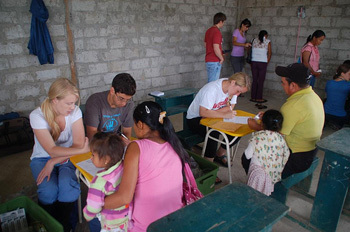Challenges and Innovations in Civil and Environmental Engineering and Earth Science Spring 2013 Seminar Series
Joseph A. "Bud" Ahearn, NAE
Retired Senior Executive of CH2MHill
Retired Senior Civil Engineer, U.S. Air Force
Founding Sponsor of Engineers Without Boarders - USA
"Engineering in Sustainable Human Development: Challenges and Opportunities"

In the next two decades, almost two billion additional people are expected to populate the Earth, 95% of them in developing or underdeveloped countries. This growth will create unprecedented demands for energy, food, land, water, transportation, materials, waste disposal, earth moving, health care, environmental cleanup, telecommunication, and infrastructure. The role of engineers will be critical in fulfilling those demands at various scales, ranging from remote small communities to large urban areas, and mostly in the developing world. In particular, we need to train a new generation of engineers who could better meet the challenges of the developing world and address the needs of the most destitute people on our planet. As we enter the first half of the 21st century, the engineering profession must embrace a new mission statement—to contribute to the building of a more sustainable, stable, and equitable world.
The presentation can be seen as the executive summary of a book being written by the speaker. It emphasizes the link between human development and sustainable development, two concepts that are closely linked in the overall discussion on poverty reduction. Both concepts contribute to securing healthy, productive, and meaningful lives to all. The book is also about the need for a new epistemology of engineering practice and education; one that is based on the idea of reflective and adaptive practice, system thinking, engagement, and a holistic approach to global problems.